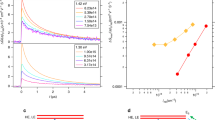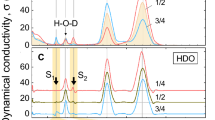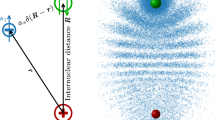Abstract
IT appears that study of the absorption spectra of the silver halide vapours has, with the exception1 of silver chloride, hitherto been confined to wavelengths above about 2500 A. We have recently photographed the absorption spectra of silver bromide and iodide in the range 2150–3000 A. with a Hilger medium quartz instrument. Within rather critical pressure limits, red-degraded absorption bands are observed in the region 2150–2475 A. for silver bromide and 2150–2350 A. for silver iodide.
This is a preview of subscription content, access via your institution
Access options
Subscribe to this journal
Receive 51 print issues and online access
$199.00 per year
only $3.90 per issue
Buy this article
- Purchase on Springer Link
- Instant access to full article PDF
Prices may be subject to local taxes which are calculated during checkout
Similar content being viewed by others
References
Jenkins, F. A., and Rochester, G. D., Phys. Rev., 52, 1141 (1937).
Brice, B. A., Phys. Rev., 38, 658 (1931).
Barrow, R. F., and Mulcahy, M. F. R., Proc. Phys. Soc., 61, 99 (1948).
Author information
Authors and Affiliations
Rights and permissions
About this article
Cite this article
BARROW, R., MULCAHY, M. Excited States of Silver Bromide and Iodide. Nature 162, 336–337 (1948). https://doi.org/10.1038/162336b0
Issue Date:
DOI: https://doi.org/10.1038/162336b0
This article is cited by
-
The Spectroscopy of Copper and Silver Monohalides: What Modern Quantum Chemistry Can and Cannot do
Theoretical Chemistry Accounts (2006)
Comments
By submitting a comment you agree to abide by our Terms and Community Guidelines. If you find something abusive or that does not comply with our terms or guidelines please flag it as inappropriate.



